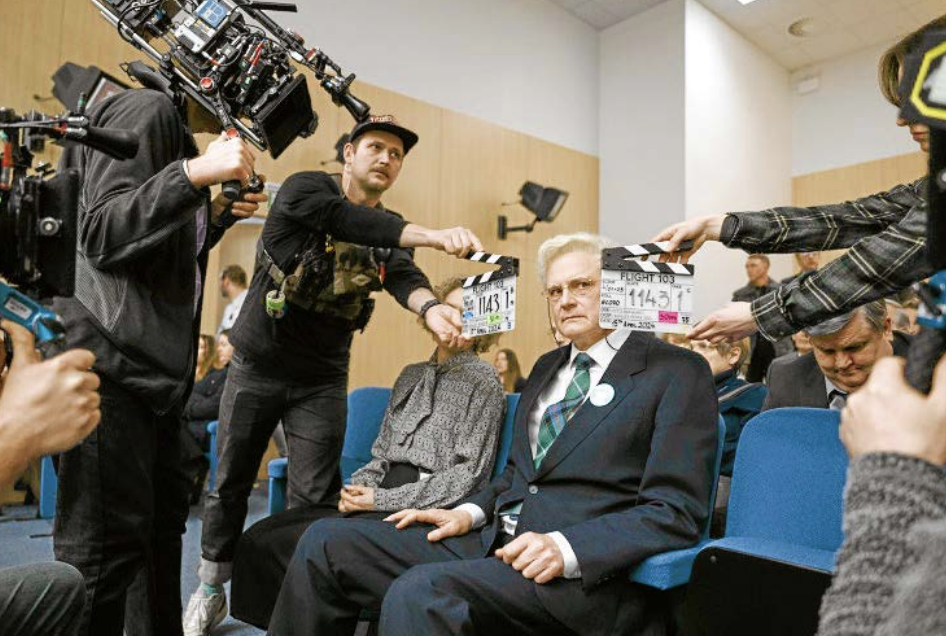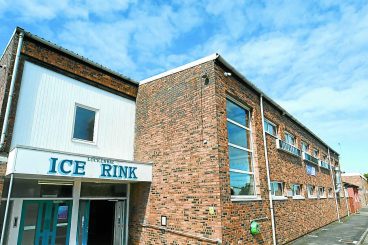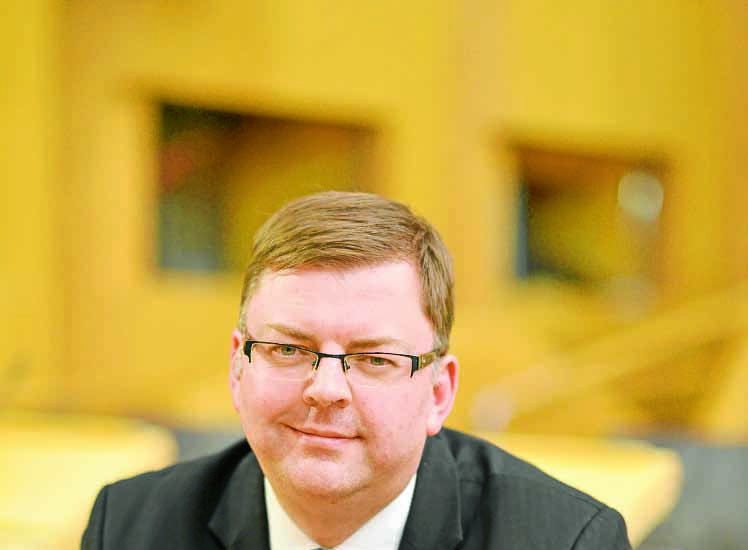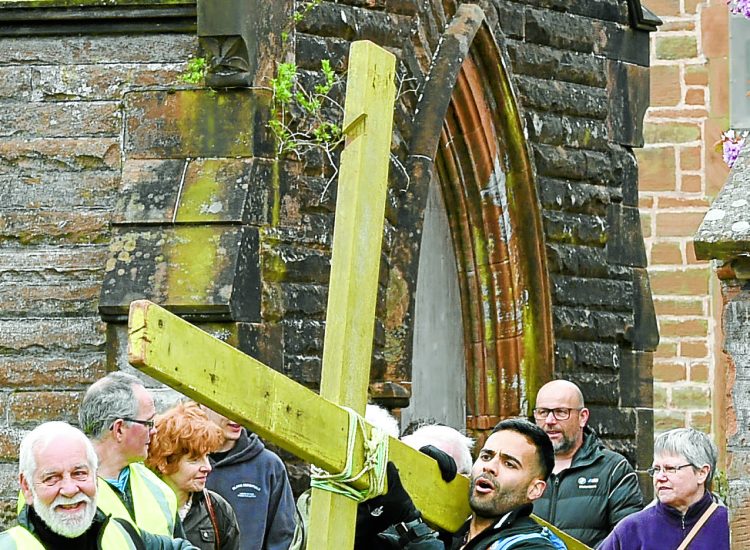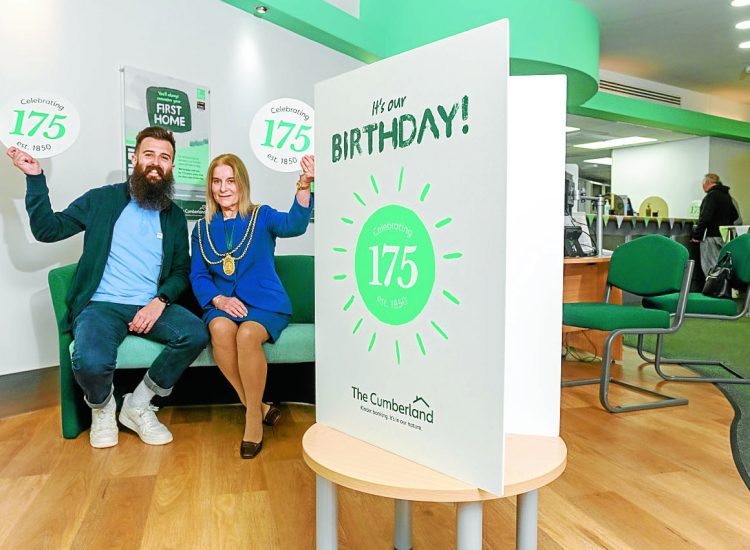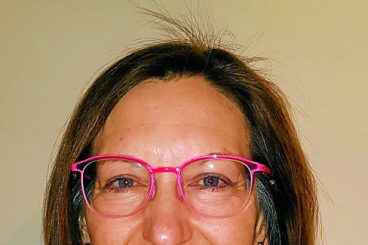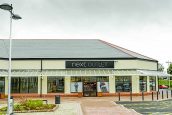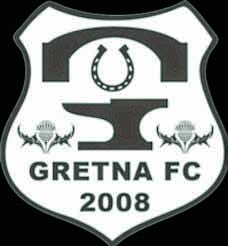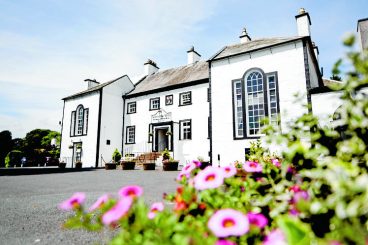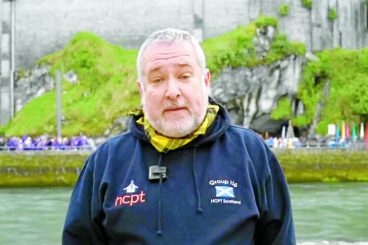THERE’S a huge hangar on the outskirts of Bathgate which is about the size of a small town. In fact, a lot of Lockerbie would fit within its walls – which is just what happened there in early 2024 when the cast and crew of the new Sky drama, Lockerbie: A Search for Truth, descended on the studios.
It was used to record key scenes in the five part series, which started on January 2. The set featured a life-size courtroom replica of Camp Van Zeist in the Netherlands, as well as homes, an airport and even the interior of an aircraft. All of the recreations were eerily accurate, down to the tiniest details.
In order to achieve that, the production required a substantial costume wardrobe and a massive props warehouse and art department. They were responsible for ensuring it looked and felt like 1988 and the years that followed. That alone was a huge job requiring the sourcing or recreation of fashions from the time, home decor, cars and even Christmas decorations. Boarding passes, passports, newspapers, technical guides, legal books also had to be made up, to ensure an air of authenticity, while court transcripts helped with parts of the script.
All those finer details came together as soon as the cameras started to roll. They provided the canvas upon which the cast, led by Colin Firth and Catherine McCormack, as the bereaved Swires, bring the true story to life.
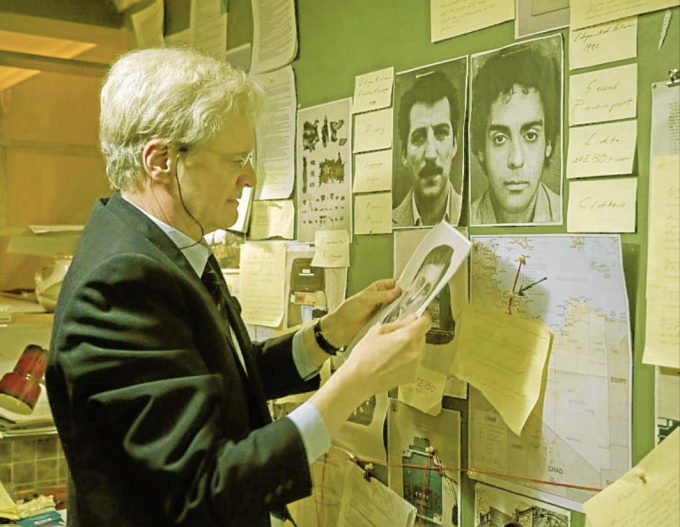
It took 65 days to shoot the five parter, mainly in Scotland but also including 12 days in Morocco, which stood in for Libya. However, there was no filming in or around Lockerbie and Tundergarth does not feature in their story, although producer Colin Wratten and executive producer Nigel Marchant explained that some of the team had visited the Lockerbie area to see it for themselves and “to get a feeling for the town”.
They told the Annandale Herald: “We recreated Sherwood Crescent, post crash, at Forthside, a former MOD site. The more sensitive areas of the story, every step of way we wanted to make sure we filmed these scenes in a sensitive way, in a secure environment. We built airport terminals and labs at Forthside too. “We recreated Lockerbie Police Station, and the ice rink at Hamilton stood in. We created a High Street at Christmas time, the memorial at the end of the High Street, we put it in.
“We also built Camp Van Zeist to scale, an exact model. Bo’ness was Lockerbie Town Hall and we used Hopetoun Estate for landscape shots.
“The laundry ladies were a very touching element of this story and we created a laundry.”
Colin added: “All the crew felt the weight of responsibility of telling this story so accurately and with such care and attention. We had to make sure and get it right. This story has attracted a really high calibre crew.
“It’s all poignant but some days especially you could see it in the crew: nothing was said, there was a calmness and reverence walking into that.
“Two or three times, just the enormity of the story and scale of it got you. We used a de-commissioned jumbo jet in Surrey and standing underneath it looking up and seeing the size of it just again brought you up short – the size of something like that being destroyed.”
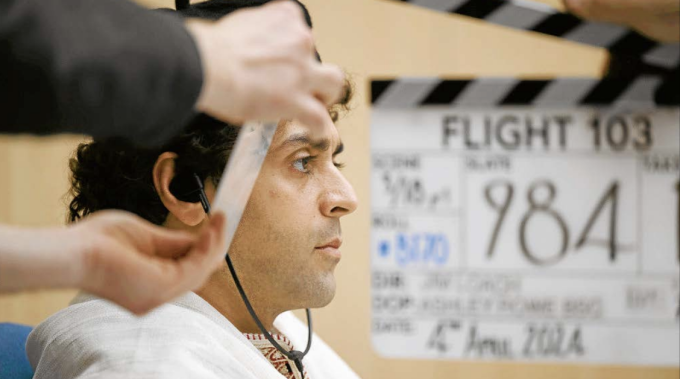
In total, 120 crew members worked full time on the drama, including in special and visual effects. Nigel said: “We spoke to the council and parish council and discussed with them the best approach. There were lot of references for us to draw on, photographs from time. This was a terrible incident in an analogue world. This was before most people had mobile phones, people did not carry cameras around.
“Most of the images are from the morning after, when the sun came up.”
Their drama runs from 1988 to Megrahi’s death in 2012, a place “it just felt right” to finish it. But they stress it’s not set up for a sequel as it’s based on Jim Swire’s book with Peter Biddulph: “A Father’s Search for Justice”.
“To a degree it’s a biopic, following Jim’s story, but we have to tell the fuller storyobviously we have to tell the entire picture,” said Nigel. They revealed Mr Swire did visit the set and met with Colin Firth, as well as others who were involved in the investigation and trial. “We had different researchers and advisors across the board, people who were there during trial,” they said. “We tried to strength test as much as we can. We had a duty of care for everyone, many familiesthat had ramifications.
“It’s Jim Swire’s personal story but all the families we want to honour also. “It is a cast of 88 and 1500 extras – but locals won’t see themselves in it. Many characters are fictionalised, that’s the most sensitive way.”
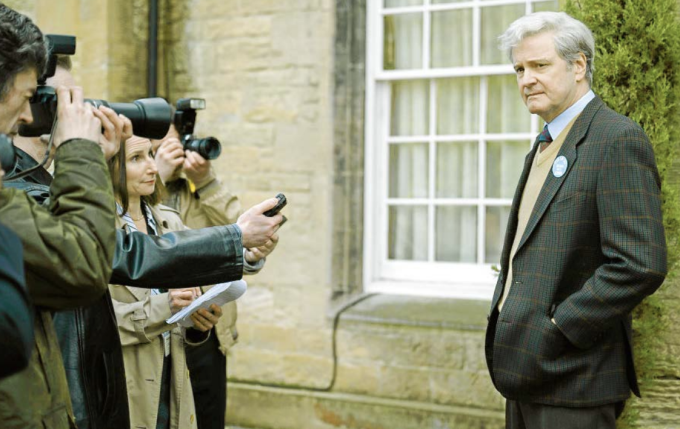
Continuing to explain what they were aiming for, the pair said: “It’s an evolving story and continues to be an evolving story. It’s a huge geopolitical story but told through the microcosm of a family and a man who has spent decades searching for the truth. “There’s a classic Britishness – a man in his worst crisis was forced to stand up and take on the establishment.”
As to the timing of the release, just after the 36th anniversary of the tragedy, the producers said: “As with any bereavement or loss, time does make it easier to look at these things and look back.
“There are generations who may not be aware of this story to the same extent as older generation. There’s been documentaries about the event but this is a much more personal story.”
And to ensure that personal touch was always at the forefront of their minds, there was a photo of the Dryfesdale Cemetery memorial prominently displayed in the producers’ officer as “a little reminder” at all times that this was not just a story.
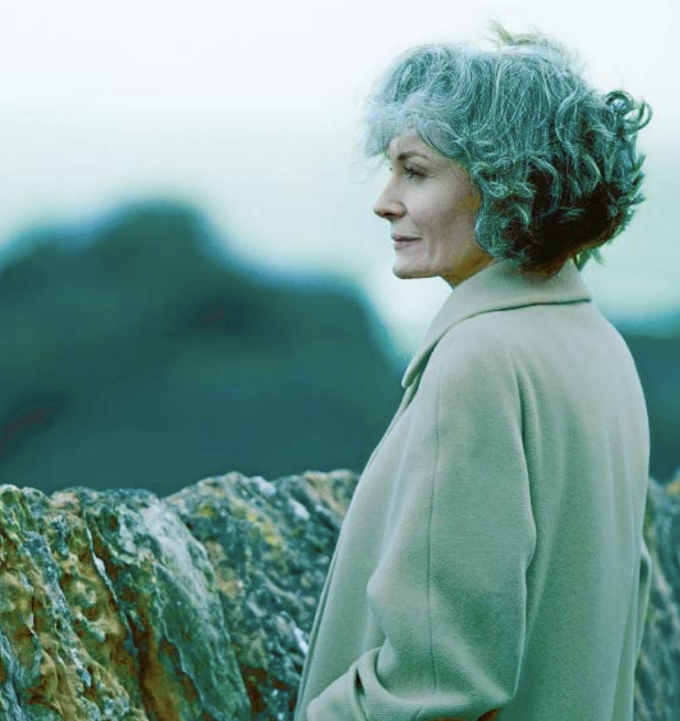
PHOTOS – GRAEME HUNTER/SKY/CARNIVAL





